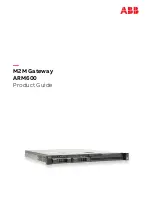
Chapter 10 Wireless Security Screen
NWA-3166 User’s Guide
131
• 802.1x-Only. This is a standard that extends the features of IEEE 802.11 to
support extended authentication. It provides additional accounting and
control features. This option does not support data encryption.
• 802.1x-Static64. This provides 802.1x-Only authentication with a static
64bit WEP key and an authentication server.
• 802.1x-Static128. This provides 802.1x-Only authentication with a static
128bit WEP key and an authentication server.
• WPA. Wi-Fi Protected Access (WPA) is a subset of the IEEE 802.11i standard.
• WPA2. WPA2 (IEEE 802.11i) is a wireless security standard that defines
stronger encryption, authentication and key management than WPA.
• WPA2-MIX. This commands the NWA to use either WPA2 or WPA depending
on which security mode the wireless client uses.
• WPA2-PSK. This adds a pre-shared key on top of WPA2 standard.
• WPA2-PSK-MIX. This commands the NWA to use either WPA-PSK or WPA2-
PSK depending on which security mode the wireless client uses.
Passphrase
A passphrase functions like a password. In WEP security mode, it is further
converted by the NWA into a complicated string that is referred to as the “key”.
This key is requested from all devices wishing to connect to a wireless network.
PSK
The Pre-Shared Key (PSK) is a password shared by a wireless access point and a
client during a previous secure connection. The key can then be used to establish
a connection between the two parties.
Encryption
Encryption is the process of converting data into unreadable text. This secures
information in network communications. The intended recipient of the data can
“unlock” it with a pre-assigned key, making the information readable only to him.
The NWA when used as a wireless client employs Temporal Key Integrity Protocol
(TKIP) data encryption.
EAP
Extensible Authentication Protocol (EAP) is a protocol used by a wireless client, an
access point and an authentication server to negotiate a connection.
The EAP methods employed by the NWA when in Wireless Client operating mode
are Transport Layer Security (TLS), Protected Extensible Authentication Protocol
(PEAP), Lightweight Extensible Authentication Protocol (LEAP) and Tunneled
Transport Layer Security (TTLS). The authentication protocol may either be
Содержание NWA-3166
Страница 2: ......
Страница 15: ...15 PART I Introduction Introduction 17 The Web Configurator 29 Tutorials 33 ...
Страница 16: ...16 ...
Страница 32: ...Chapter 2 The Web Configurator NWA 3166 User s Guide 32 ...
Страница 64: ...Chapter 3 Tutorials NWA 3166 User s Guide 64 ...
Страница 66: ...66 ...
Страница 70: ...Chapter 4 Status Screen NWA 3166 User s Guide 70 ...
Страница 122: ...Chapter 8 Wireless Screen NWA 3166 User s Guide 122 ...
Страница 128: ...Chapter 9 SSID Screen NWA 3166 User s Guide 128 ...
Страница 158: ...Chapter 14 IP Screen NWA 3166 User s Guide 158 ...
Страница 166: ...Chapter 15 Rogue AP Detection NWA 3166 User s Guide 166 ...
Страница 186: ...Chapter 17 Internal RADIUS Server NWA 3166 User s Guide 186 ...
Страница 213: ...Chapter 19 Log Screens NWA 3166 User s Guide 213 ...
Страница 214: ...Chapter 19 Log Screens NWA 3166 User s Guide 214 ...
Страница 235: ...Chapter 20 VLAN NWA 3166 User s Guide 235 ...
Страница 236: ...Chapter 20 VLAN NWA 3166 User s Guide 236 ...
Страница 270: ...Appendix B Wireless LANs NWA 3166 User s Guide 270 ...
Страница 300: ...Appendix D IP Addresses and Subnetting NWA 3166 User s Guide 300 ...
Страница 308: ...Appendix E Text File Based Auto Configuration NWA 3166 User s Guide 308 ...
Страница 314: ...Appendix F How to Access and Use the CLI NWA 3166 User s Guide 314 ...
Страница 326: ...Appendix H Customer Support NWA 3166 User s Guide 326 ...
Страница 332: ...Index NWA 3166 User s Guide 332 ...
















































